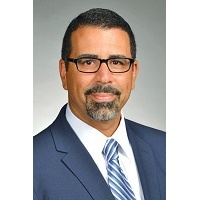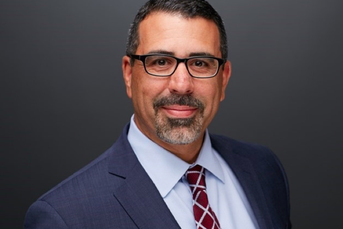More advisory firms develop bench strength as competition for heavy hitters intensifies
Building a top-performing team is one of the biggest challenges facing leaders in any field. As increased competition…
Building a top-performing team is one of the biggest challenges facing leaders in any field. As increased competition for top talent continues to grow, compensation is outpacing the rate of revenue growth. This makes human capital management and strategic leadership more important than ever – not just to retain and develop talent, but to ensure that firms maintain the same levels of profitability and position themselves for future growth. Successful leaders must strategically balance the need for competitive compensation for today’s top performers and a smart investment in early-career talent with potential to deliver tomorrow’s leaders.
For advisory firms, striking this balance is taking on greater importance, according to the new InvestmentNews 2017 Adviser Compensation & Staffing Study. The reason: The battle for top advisory talent is driving up compensation levels, despite revenue growth rates that appear to be lagging behind.
The study, which draws upon data provided by more than 350 advisory firms, found that salaries for many positions rose significantly between 2015 and 2017 (Figure 1). Many positions saw double-digit salary increases, but the largest increases were reserved for lead advisers, who experienced a 23% increase over the two-year period.
On the surface, pay increases for advisers make sense, considering the intensifying competition to recruit and retain top talent as a generation of founders retires from the industry. Yet, the study also found that pay increases are swiftly outpacing revenue growth: firms achieved a median 2016 revenue growth rate of 5%, down from 2015’s growth rate of 8% – and a third of the growth rate for 2013 (16%) and 2014 (14%). The ultimate profitability implications of single-digit revenue growth and double-digit pay increases are clear, especially when personnel expenses account for 73% of a typical firm’s total expenses.
‘Minor League’ Play
Not surprisingly, many firms are adjusting their staffing strategies to respond to these realities. The InvestmentNews study found that among the firms that created new positions in 2016 (one in three firms did so), there is a greater emphasis on hiring individuals who are earlier in their careers, with the intention of helping them develop into lead advisers. In fact, among Super Ensembles (firms with >$10M in annual revenue), 73% added a position – and their most popular addition was for a support advisor, followed by a service advisor (Figure 2). By pursuing this kind of strategy, firms can avoid bidding wars and large signing bonuses, as well as the ability to develop the right talent to fit the team based on your culture and approach.
Intuitively, we know that investing in a talent development strategy is intended to deliver value over the long-term, as younger team members traverse a career path to become advisers. However, the study found that firms that emphasize hiring junior staff may reap performance benefits, such as creating capacity to serve more clients at a lower cost, which can improve productivity of your lead advisors and profitability of the firm.
Among top-performing firms with <$5M in annual revenue (Ensemble firms), the teams' “professionals” constitute 45% of total personnel, vs. 56% at all other firms.* This gap also exists among top-performing Enterprise Ensembles ($5M – $10M in annual revenue) and Super Ensembles ($10M in annual revenue), but it's a bit narrower.
Demand for Development
The potential long- and short-term benefits of a talent development approach are compelling. But, firms can only reap these benefits if they invest commensurate time and energy into developing their talent. According to the study, only about half of firms have a professional training process for helping staff build client service skills, and roughly one-quarter have formal programs devoted to cultivating business development knowhow or acquiring skills to be future leaders at a firm.
This latter point is particularly crucial: firms must ensure that they help the next generation of talent fulfill their potential to grow into leaders, or risk losing them to the competition as they mature in their ability. One approach to cultivating leadership, which I have seen in some firms, is to hire a professional dedicated to your human capital and development strategies, who will guide the firm’s culture and formalize a structure for performance management and leadership development alongside traditional training programs.
BNY Mellon’s Pershing provides a comprehensive array of practice management resources, programs and personalized support to help advisory firms manage and grow their business. You can engage with our consultants in multiple ways—receive guidance for implementing one of our advisor programs, attend a Pershing event or practice management forum, or online through our webcasts. You can learn more at pershing.com.
About the Author
Gabriel Garcia is a Managing Director for BNY Mellon’s Pershing Advisor Solutions in the Relationship Management group. Mr. Garcia works with registered investment advisers (RIAs) interested in developing and growing their practices, helping them to manage business issues they face. He engages advisers to help them make informed decisions around maximizing Pershing’s resources and evolving their firms to become more scalable, profitable and productive. Mr. Garcia spent his previous 15 years with Charles Schwab & Co., where he held several leadership positions in sales, training and consulting. His last six years were spent working directly with RIAs. Mr. Garcia has consulted with more than 100 firms ranging in AUM from $50M to $3B. He also is a frequent speaker at industry and national conferences. Mr. Garcia has 20 years of experience in financial services. Mr. Garcia earned a Bachelor of Science degree in Finance and Business Administration from Radford University.
* The study defines top-performing firms as the leading 25% of firms in a metric that combines growth, profitability and productivity, while professionals are those in positions primarily and directly responsible for managing client relationships, delivering advice, or developing new business.
Learn more about reprints and licensing for this article.





